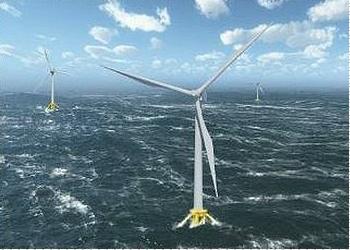
BRUSSELS, Belgium, February 27, 2019 (ENS) – The European Commission Tuesday introduced The Innovation Fund, an investment program worth over €10 billion for low-carbon technologies in energy intensive industries. The program supports renewables and carbon capture as burning fossil fuels produces carbon dioxide (CO2), the most prevalent greenhouse gas.
The Innovation Fund is a key funding instrument for delivering the EU’s economy-wide commitments under the Paris Agreement on climate and supporting the Commission’s strategic vision of a climate-neutral Europe by 2050.

The Innovation Fund will be one of the world’s largest funding programs for climate action, the Commission claims.
Funds will flow to endeavors that focus on carbon capture and utilization, construction and operation of carbon capture and storage facilities, innovative renewable energy generation and energy storage.
Unique low-carbon technologies and processes in energy intensive industries, especially products that can replace carbon intensive technologies, will be funded.
The initiative is part of a new strategy adopted by the Commission in November 2018, a strategic long-term vision for a prosperous, modern, competitive and climate neutral economy by 2050, called “A Clean Planet for all.”
The strategy maps out how Europe can lead the way to climate neutrality while preserving the competitiveness of its industries by investing into realistic technological solutions.
“This transition also requires further scaling-up of technological innovations in energy, buildings, transport, industry and agriculture sectors,” the Commission said in a statement.
Commissioner for Climate Action and Energy Miguel Arias Cañete said, “Less than three months after adopting our strategic vision for a climate neutral Europe by 2050, we are putting the money where the mouth is.”
“Our objective,” said Cañete, referring to the 2015 Paris Agreement on climate, “is to keep building a modern, competitive and socially fair Paris-aligned economy for all Europeans. For this to happen, we will need deployment of clean innovative technologies on an industrial scale.”
“This is why we are investing in bringing to the market highly innovative technologies in energy intensive industries, in carbon capture, storage and use, in the renewable energy sector and in energy storage,” Cañete said.
“We are today unleashing technological solutions in all Member States and pressing the fast-forward button in our transition to a modern and climate-neutral society in Europe,” the commissioner said.

The Commission aims to launch the first call for proposals under the Innovation Fund in 2020, followed by regular calls until 2030.
The investment program will be backed by the revenue from sales of carbon allowances from the EU Emissions Trading System (EU ETS) sold on the carbon market in the period 2020-2030.
The revenues from these sales will depend on the carbon price, which is currently around €20.
These revenues will go into an Innovation Fund, which will pool together resources amounting to around €10 billion, depending on the carbon price. At least 450 million allowances from the EU ETS are expected to be sold on the carbon market between 2020 and 2030.
The Commission said in a statement that it “wants to ensure that Europe continues to be at the top of the league as regards new high-value patents for clean energy technologies.”
The Innovation Fund is projected to lead to the creation of local green jobs and growth, energy-efficient homes with a reduced energy bill, cleaner air, more efficient public transport systems in cities, and secure supplies of energy and other resources.
Copyright Environment News Service (ENS) 2019. All rights reserved.
